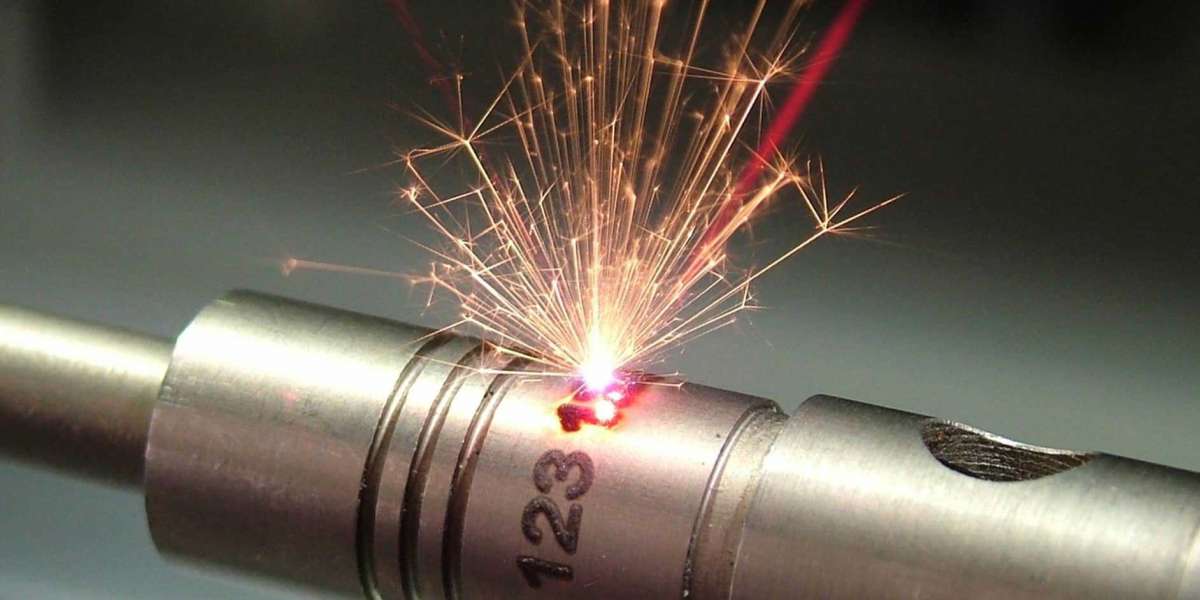Laser marking is a high-precision process that uses concentrated laser beams to mark or engrave various materials, such as metals, plastics, ceramics, and even wood. Unlike traditional methods like ink printing or etching, laser marking offers unparalleled precision, permanence, and versatility. This technique has become a pivotal element across various industries, providing businesses with a way to brand, identify, and enhance the appearance of products without the need for extensive post-processing or additional materials.
The Process Behind Laser Marking
Laser marking works by focusing a laser beam onto the surface of a material. This process can be done using different types of lasers, depending on the material and the desired result. The intensity of the laser and the duration of its exposure are key factors in determining the outcome. For example, in a metal surface, laser beams can cause oxidation or a change in color, while in plastics, the beam can vaporize the surface layer to create a visible mark or engraving.
The laser creates a high amount of energy in a small, precise area, resulting in a reaction that ages the surface of the material. This can be in the form of a change in color, a text or graphic engraving, or even a unique code like a serial number. The key advantage here is that the laser does not physically touch the material, reducing wear and tear, and making the process clean, efficient, and fast.
Types of Laser Marking
There are several types of lasers used in the marking process, each suited for specific materials and applications:
CO2 Lasers : Best for organic materials like wood, plastics, leather, and glass.
Fiber Lasers : Excellent for metals, including steel, titanium, and aluminum.
YAG Lasers : Commonly used for harder materials, such as ceramics and some metals.
Diode Lasers : Known for being more cost-effective and efficient, used for both marking and engraving.
Each type of laser has its specific use case, and choosing the right laser depends on the material being marked and the desired result.
The Applications of Laser Marking
Laser marking has quickly gained popularity in a range of industries due to its versatility and cost-effectiveness. Here's a closer look at the most common applications:
1. Manufacturing and Industrial Applications
Laser marking plays a crucial role in the manufacturing industry. It is used for engraving serial numbers, barcodes, logos, and product information directly onto products. This is particularly beneficial in industries where traceability and quality control are critical, such as aerospace, automotive, and electronics. Laser marking ensures that product identification remains permanent and clear, even under harsh conditions like high temperatures or chemical exposure.
2. Medical Industry
In the medical field, laser marking is widely used for marking surgical instruments, implants, and medical devices. These marks often include unique identifiers, which are vital for traceability, safety, and regulatory compliance. The laser marks are precise and resistant to wear, ensuring that critical information does not fade over time. Furthermore, since the laser doesn't come into direct contact with the material, the risk of contamination is minimized.
3. Jewelry and Fashion
Laser marking has revolutionized the way manufacturers create intricate designs and engravings on jewelry. With laser precision, jewelers can engrave detailed designs, logos, and personal messages onto precious metals like gold, silver, and platinum without compromising the integrity of the material. This process allows for high customization and precision, making it ideal for high-end fashion accessories.
4. Electronics and Consumer Goods
For electronics, laser marking is used to permanently label products like mobile phones, computers, and household appliances. Manufacturers can mark serial numbers, logos, and safety instructions directly onto components, ensuring they are durable and resistant to wear. The laser marking also enables finer details to be included in a much smaller area, making it ideal for compact devices.
5. Packaging and Branding
Laser marking has become an essential tool in packaging and branding. For packaging materials, particularly in food and beverage industries, laser marking can provide labels that are both high-quality and durable. This method is often used for marking expiration dates, product codes, and logos on packaging. It also enhances the branding efforts of companies, ensuring their labels stand out in a highly competitive market.
Why Industries Are Turning to Laser Marking
The popularity of laser marking in various industries can be attributed to several factors, including its precision, speed, and cost-effectiveness. One of the most notable advantages of laser marking is its ability to provide high-quality results without the need for consumables like ink or toner. Unlike traditional printing, which can involve the use of potentially harmful chemicals and require maintenance of equipment, laser marking is a cleaner and more sustainable solution.
Moreover, laser marking provides a permanent result that can withstand harsh conditions. Whether it's exposure to high temperatures, chemicals, or abrasions, the marks made by lasers remain intact, making them ideal for products that need to endure wear and tear throughout their lifecycle.
In addition to its durability, laser marking is a non-contact process. Since the laser doesn't physically touch the material, there’s no risk of damaging or deforming delicate surfaces. This makes it an excellent choice for high-precision applications, such as the engraving of intricate designs or text.
How Laser Marking is Impacting Design and Customization
One of the key benefits of laser marking is the ability to create highly customized and intricate designs. In industries like jewelry, fashion, and consumer electronics, laser technology has enabled manufacturers to offer highly personalized products to their customers. This customization is often seen in the form of names, logos, or intricate patterns that are engraved directly into the product.
This trend towards personalized products is gaining traction among consumers, particularly in the gift and luxury goods markets. The ability to mark a product with a personal message or design not only adds value but also creates a unique connection between the product and the consumer. For businesses, offering customization through laser marking can be a significant differentiator in the market.
The Future of Laser Marking
As technology continues to advance, the capabilities of laser marking will only improve. Emerging trends suggest that lasers will become even more powerful and efficient, making the process faster and more cost-effective. There is also potential for new materials to be compatible with laser marking, further expanding its application in various industries.
With its growing role in industries like automotive, electronics, medical devices, and fashion, laser marking is positioned to remain a critical technology for marking, engraving, and branding. As more businesses look for sustainable, high-quality solutions for product identification and customization, the demand for laser marking will continue to rise.
Final Thoughts
Laser marking has proven itself as an invaluable tool across multiple industries, providing businesses with a method of creating durable, high-quality markings with unparalleled precision. From its role in manufacturing and medical devices to its impact on jewelry design and packaging, laser marking is transforming how products are branded and identified.
The flexibility, speed, and accuracy of laser marking make it an indispensable technology for businesses seeking to improve product traceability, enhance brand identity, and offer customized solutions to customers. As the technology evolves, we can expect even more industries to leverage the benefits of laser marking, cementing its place as a key component in modern manufacturing and design processes.







